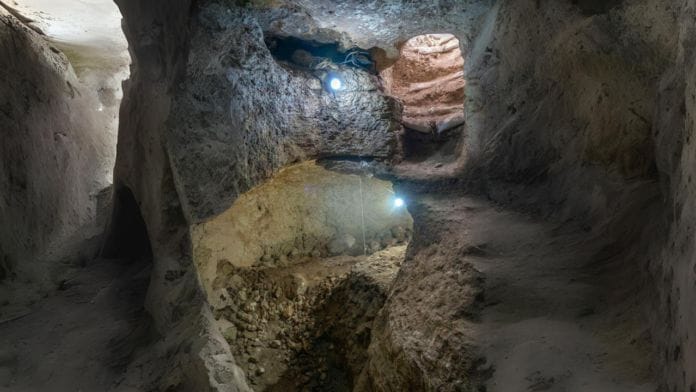Archaeological digs near the Sea of Galilee have unearthed the largest known ancient underground hideout in the history of the region.
The Israel Antiquities Authority’s (IAA) excavation at Huqoq uncovered evidence that, in anticipation of the First Revolt in 66 CE and the Bar Kochba Revolt in 132 CE, local inhabitants transformed a Jewish ritual bath into an elaborate hideaway. The modified area led to other underground chambers, enabling movement through tight, low areas beneath the buildings. In all, it had about eight hiding spaces and 90-degree tunnels to hamper heavily armed Roman soldiers chasing them.
“The hiding complex provides a glimpse at a tough period of the Jewish population in Huqoq and in the Galilee in general,” said IAA Director Uri Berger.
“However, the story that the site tells is also an optimistic story of an ancient Jewish town that managed to survive historical tribulations. It is a story of residents who, even after losing their freedom and after many hard years of revolts, came out of the hiding complex and established a thriving village with one of the most impressive synagogues in the area.”
The dig also turned up numerous shattered clay and glass plates and a ring made of precious stones.
Known to have been a Jewish settlement during the Early Roman period nearly 2,000 years ago, Huqoq has historical mentions in the Talmud. Both Rabbi Pinhas and Rabbi Hezekiah, sages from the third and fourth centuries CE, were famous residents of the ancient city.











